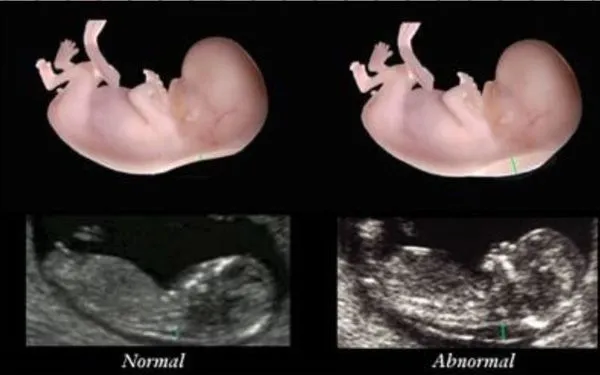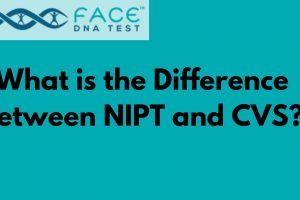Throughout the initial trimester of pregnancy, antenatal screening includes the nuchal translucency (NT) inspection, which is crucial. Using a sonogram, the free space around the rear of the fetus’s skull is measured to determine the likelihood of specific genetic disorders, such as Down syndrome. Important preliminary data about direct testing during pregnancy and care is provided by determining if the NT value is within the normal or abnormal region. This blog will describe the NT scan procedure, nuchal translucency, and the main distinctions between abnormal and normal findings.
We’ll also talk about the meaning of an inflated NT, how well it predicts genetic diseases, and what information pregnant parents should know regarding this diagnostic test. Complete NT evaluation is available at Face DNA through our sophisticated ultrasound nipt test skills, which are only one of our many prenatal screening alternatives. Please continue reading for a more thorough examination of this crucial measure and how it varies between healthy pregnancies and possible chromosomal problem markers.
What is Nuchal Translucency?
The underlying fluid-filled area visible at the rear of the embryo’s neck undergoing an ultrasound examination between weeks 11 and 14 of pregnancy is known as the nuchal translucency. Medical professionals use the fetal nuchal translucency examination to gauge the breadth and thickness of this transparent area. While some fluid buildup in this region is acceptable, an expanded NT space may indicate a higher chance of specific genetic disorders linked to excessive fluid buildup. This encompasses trisomy 13, 21 and 18, Down syndrome, and trisomy 18. Thus, the assessment of nuchal translucency offers helpful data for early detection.
A small amount of fluid is average, and measuring the amount of fluid can help calculate your baby’s chances of having a chromosomal or genetic variant. NT ultrasound is a screening test that doesn’t diagnose a condition. It helps your healthcare provider determine if your baby is at risk and if further tests should be recommended.
What is a NT Scan?
An NT scan, also known as a nuchal translucency imaging, is performed from weeks 11 and 14 of gestation. The ultrasound technician uses special instruments to determine the buildup of fluid area at the back of the fetus’s neck precisely. For a precise NT evaluation, the fetus must remain in an exact posture throughout the scan. The NT scan examines the NT space and carefully assesses the entire fetal physique to look for any apparent anomalies at this stage of development. The pregnant woman’s age, blood tests, and NT measurements are evaluated for a comprehensive initial trimester testing study.
What Does the Nuchal Translucency Test For?
The nuchal fold, located at the back of your baby’s neck, is examined during a nuchal translucency scan. There is fluid behind each baby’s neck. Medical professionals have discovered that when a newborn has chromosomal abnormalities, more fluid tends to accumulate near the base of the neck. A disorder like Down syndrome (trisomy 21), Patau syndrome (trisomy 13), or Edwards syndrome (trisomy 18) may be present in your kid if there is more fluid in this location.
A greater NT value may also suggest a higher chance of congenital cardiac defects. You can find out if your baby is likely or unlikely to develop certain disorders based on the findings of the NT scan. The ultrasound checks for some of your unborn child’s fundamental anatomical features at the time of nuchal translucency (fetus). The likelihood of genetic or structural disorders may be raised by other abnormalities found at the time of NT.
What is a Normal Nuchal Translucency Measurement at 12 Weeks?
Between 11 and 14 weeks of gestation, an NT measurement of up to 3.5 mm is typical. The NT thickness was 1.30 ± 0.54 mm on average. Pregnant women with increased NT thickness greater than 2 mm and more than the 95th percentile based on gestational age (GA) were found to be 89 (5.5%) and 58 (3.6%), respectively. Our results showed a substantial correlation between increasing NT thickness and chromosomal abnormalities, with the reference 95th percentile value range for NT being 1.8-2.35.
A low probability for Down syndrome, along with additional trisomy problems, is indicated by a normal NT. However, marginal or even slightly larger readings can also occur in certain healthy pregnancies. Therefore, NT must not be read in isolation. The most accurate evaluation is obtained when combined with additional biometric information and fluid examination.
How Accurate is Nuchal Translucency for Abnormalities?
Roughly 70% of instances of trisomy 21, or Down syndrome, may be identified by NT tests alone. Many medical professionals combine blood testing with a standard NT ultrasound. When first-trimester blood tests are added, the prediction accuracy rises to almost 95%. The rate of false positives is 5%. This shows a moderate level of accuracy, but it is not enough to provide a firm diagnosis. Nonetheless, the combination screening accurately detects about 90% of pregnancies with Down syndrome when coupled with the mother’s age and blood testing from the first trimester. This emphasizes how crucial a thorough examination is. If the family wishes it, an enlarged NT suggests the necessity for further diagnostic testing during pregnancy.
What is Abnormal Nuchal Translucency?
NT testing only reveals your baby’s conditional risk. If your screening results are abnormal, your doctor may do an amniocentesis test (later in pregnancy) or chorionic villus sampling (CVS).
When your placenta is sampled for CVS, its tissue is examined for genetic disorders. Amniotic fluid is extracted from your uterus using a needle during an amniocentesis procedure. The cells in this fluid have genetic information that can be used to determine infections or anomalies.
A greater than anticipated NT space calls for further investigation. A slightly expanded NT measurement between 2.5 and 3.5 mm implies a somewhat elevated risk for chromosomal severe problems, but a considerably enlarged NT measurement over 3.5 mm indicates a significantly increased risk. An NT assessment is deemed more extensive or abnormal nuchal translucency if it exceeds the typical limit for the gestational age at delivery. Elevated NT severity might indicate severe birth defects or hydropsia in the fetus. A few healthy pregnancies may, however, also have slightly elevated measures.
Your healthcare professional may recommend a fetal echocardiography to examine your unborn child’s heart in greater detail. Fetal cardiac abnormalities are also linked to aberrant NT scan results.
Difference Between Normal and Abnormal Nuchal Translucency
| Points | Normal Nuchal Translucency | Abnormal Nuchal Translucency |
| Thickness | Less than 3mm | Equal or more than 3mm |
| Chromosome anomalies risk | Low | High |
| Indicates possible heart diseases | Normal development | Risk of possible cardiac defects |
| Changes in Thickness | Decreases with pregnancy time | Increases with pregnancy time |
| Indicates growth Issues | Normal development | Possible issues |
Down Syndrome Risk with 11-Week Ultrasound
Down syndrome Eleven-week pregnancy ultrasound: Elevated NT during this scan indicates a higher chance of Down syndrome, though it cannot be conclusive. At this point, the NT is unusually big in approximately sixty percent of pregnancies with Down syndrome. For the most accurate Down syndrome chances, use NT in conjunction with the first-trimester biochemical testing. Although an NT of greater or equal to 3.5 mm suggests a significantly increased risk that still has to be confirmed by amniometry, a somewhat raised NT of 2.7 mm would indicate low to moderate risk. When there are concerns about a larger NT, most couples want to have additional investigations done.
Nuchal Translucency Normal vs Abnormal for Down Syndrome
Normal versus abnormal nuchal translucency in Down syndrome, an expanded NT is associated with a much-increased chance of Down syndrome, whereas a normal NT predicts a low probability. Between weeks 11 and 14:
- A normal NT of less than 2.5 mm suggests a lesser likelihood of Down syndrome.
- A 2.5–3.5 mm borderline NT indicates a modest danger rise.
- An NT measurement of more than 3.5 mm indicates a significant probability of Down syndrome.
Normal NT, nevertheless, cannot ensure that the baby is free of Down syndrome. Although abnormal NT is concerning, amniocentesis remains necessary for diagnosis. Serum screening and skilled NT ultrasonography together provide the best risk assessment.
What to Expect with the 13-Week Ultrasound?
The measurement of fetal development and physique, particularly the NT space, is still the primary goal of the 13-week ultrasound. Even with the somewhat higher 13-week NT threshold of 2.8 mm, an expanded measurement might still suggest an increased chance of trisomies. Compared to the 11-week ultrasound imaging, the 13-week scan shows more precise anatomical information, including fingers, toes, facial characteristics, and organs. The fetus is relocating faster. The NT outcome will be one of several data your physician will consider to accurately estimate your first-trimester risk and choose the best course of action.
Choose Clarity with Our DNA Test.
Get Accurate Answers With our Test!.
-
- Accurate
- Quick Result
- Private and Secure
- Affordable

Conclusion
The nuchal translucency scan assesses the risk for significant chromosomal abnormalities such as Down syndrome, which gives essential data for early screening. While larger NT readings indicate increased danger for trisomy disorders and necessitate additional diagnostic procedures, normal NT concentrations indicate lessened risk. Early pregnancy, when results are at their best, is when NT screening seeks to identify anomalies. But NT by itself is not enough to identify flaws. Combining this important first-trimester marker measurement with modern non-invasive nipt testing for genetic risk factors, and a thorough ultrasound examination results in a full risk assessment as part of the Face DNA Test prenatal screening panel. If an increased NT causes worry, we provide families with choices for definitive diagnostic testing as well as assistance. Though an aberrant NT value might be unsettling, keep in mind that false positives do occur and that our support is available.






Leave a Reply
Your email is safe with us.
You must be logged in to post a comment.